University recruitment: Team Canada’s John Gay, Lindsey Butterworth and Django Lovett
That’s why Streamline Athletes teamed up with BC Athletics for Navigating University Recruitment, an event for high school athletes and their parents/guardians to learn about the one-of-a-kind journey from the little high school pond to the great big sea that is post-secondary athletics.
At the event, we were fortunate to be joined by three Canadian national team members, all of whom had their own unique recruitment experiences. Joining us were John Gay (Athletics Canada steeplechaser and former UBC Thunderbird), Lindsey Butterworth (Athletics Canada 800-metre specialist and former SFU athlete), and Django Lovett (Athletics Canada high jumper and former New Mexico Lobo).
We hope John’s, Lindsey’s, and Django’s collegiate track and field stories inspire you to continue your own academic and athletic journey.
The information portion of the event is linked at the bottom of the article.
Now for a bit of background information before we dive into Q & A with the athletes.
There are 1300+ colleges and universities with teams in both Canada and the USA. These schools span from institutions in the NCAA (Division I, II, III), NAIA, NJCAA, U SPORTS and the CCAA, with student populations that range from 800 students to over 50,000.
In other words, there’s a team out there for you, you just need to find it.
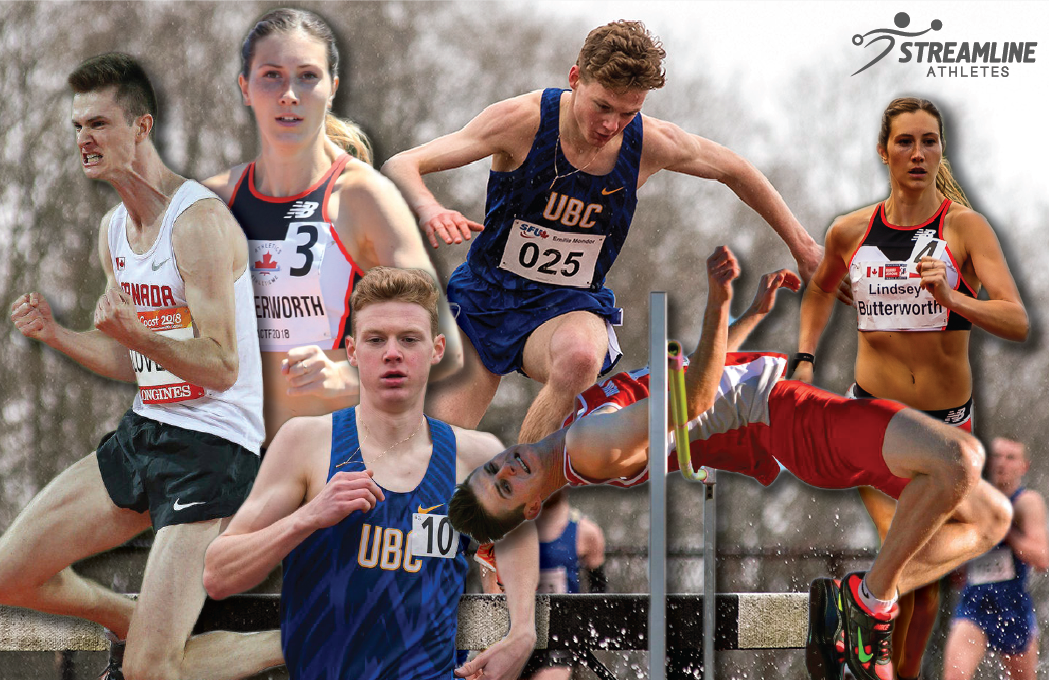
As a prospective student-athlete (or parent/guardian of a PSA), it’s vital to do your research and keep a list of potential schools. Take into consideration academics: what do you want to study? Take into consideration athletics: what association is the right fit for you?How are the school’s facilities? Take into consideration the financial aspects: how much is tuition for Canadian schools versus American schools? Take into consideration the location: is the school close to home or far away?
I know it seems like a lot, but this is all part of the fun of the exciting adventure that lies ahead!
John, Lindsey, and Django answered some questions to bring clarity to the university recruitment process.
In order to get a first hand account of the recruitment experience and what life is like as a collegiate athlete, we asked each athlete some general and individualized questions to really spotlight their own experience. These three athletes competed in different countries and different associations, covering a wide range of what collegiate athletics has to offer:
John Gay
John Gay is a Canadian national team steeplechaser and recent master’s graduate from UBC’s Sauder School of Business. John completed his undergraduate studies just last year — right around the same time he won his third consecutive NAIA national title in the 3000m steeplechase. In 2019 John represented Canada at the IAAF World XC Championships in Aarhus, Denmark and the World Athletics Championships in Doha, Qatar.
Lindsey Butterworth
In 2019, no Canadian woman ran 800 metres faster than Lindsey did — she clocked a 2:00.31in Portland. Lindsey represented Simon Fraser University from 2010 through 2015 and has since found success on the international stage. Lindsey has represented Canada on several occasions, including the 2018 NACAC Games, the 2019 Pan American Games, and the 2019 World Athletics Championships. In 2018, Lindsey was the Canadian National Champion in the 800m event.
Django Lovett
Django Lovett is a former University of New Mexico high jumper and current member of the Canadian national team, having represented Canada at the recent World Athletics Championships in Doha. Django first wore the Canadian singlet over ten years ago, when he jumped at the World Youth Championships in Italy. In 2018, Django jumped his personal best of 2.30 metres.
Now let’s get to the good stuff!
Recruitment: What is the right fit for you?
A major component of recruitment is narrowing down your options and knowing what school you want to attend and what is the right fit for you. This requires research on schools, programs, facilities and location, to name a few. Don’t be shy, take that leap and see what is out there, the process is different for everyone. Let’s get started…
Q: When you were researching universities, what was your process? How did you track/rank options? Who was involved (coaches? family?)? How did you decide what schools to research?
John: I learned a lot as I went through the recruiting process. I had to rely a lot on my club coaches, they had an idea of what the system was like. My parents had less of an idea than I did. They were very supportive but less of an asset in terms of real experience. The biggest thing I found was getting in contact with schools that I knew I would be happy with regardless of my athletic career. I was academically motivated, so it was just a matter of finding schools that ticked the boxes academically, with the programs I was interested in, then finding a balance. If my school was suffering I would have a positive athletic experience and vice versa.
Lindsey: I was pretty new to the sport competitively and I really leaned on my high school coaches and parents to help me decide where I was going to get a post secondary education. I was focused on where the best track and field program was, which didn’t allow me to do much research into academic programs, which is also very important. I was pretty overwhelmed with the process with all the options I had.
Django: I was pretty naive to not only the process but to the sport of track and field itself. I had only been doing it for about a year and I had had some success in my summer of grade 11. Then in early grade 12 my athletic and academic high school counsellor gave me a letter from Cornell University. I said, “What’s this?” and I was told it was a letter from a university and that I was getting recruited. I didn’t even know that was actually a thing. So I was sat down, told I had some talent, and that this path could be laid out for me. I was told to look up some schools geographically and just send out emails to coaches and wait to hear back. I came up with a list of warm weather schools; that was my number one priority. That was pretty much it. I wanted to see the sun shining. So I sent out some emails, waited to hear back and just picked up the pieces from there.
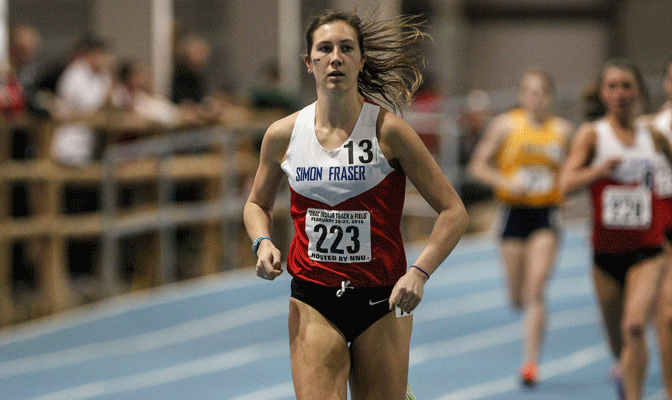
Q: During the recruitment process, how much emphasis should be put on obtaining a scholarship?
Django: For me it was kind of all or nothing. I was in it to win it. I had schools offer me nothing as one of the top five high schoolers in the world coming out of high school and some schools did not return my calls. Some schools offered me 30%. Some schools gave me books, and other schools were like, “Yeah, full scholarship!” So even if you are performing at the highest level, it’s not really a reflection of your ability or you yourself, it’s just a matter of [whether or not] that program is in the position to give you what you’re worth… and for some, they didn’t have that place for me.
John: To add onto that I don’t think you should force yourself to form an alignment with a school if you are not seeing eye-to-eye with the coach. Even if it is a school that you really wanted to go to because you loved the way their uniforms looked or you watched them on Flotrack growing up. If the coach isn’t returning your calls or you recognize that they don’t have an academic program that fits what you want, that is a big red flag. I’ve seen so many athletes muscle their way through the recruiting process and get an idea in their head that this is the school for [them] no matter what. And then even when the coach at that school says they are not the school for [them], the athlete tries to find a way in. Oftentimes they end up getting much less than they were looking for in terms of scholarship compensation, they may create a broken relationship with the coach, only last a season at the school, they might transfer or they may stop running all together.
So for me, I took a couple of different visits and it became pretty clear right away if there was that spark or that click. If the university is reaching out, or getting back to you to create conversations, that is a really good sign. If you feel like you have to fight for every inch of the conversation, pulling teeth for information, it might be a sign that they aren’t quite as interested in you as you are in them. And I think that’s where it’s important to swallow your ego a little bit because so many athletes have this idea that they were the best kid in their city or even the best kid in their province and they just assume that everyone is interested in them as they are in themselves. That’s something that I really had to overcome and it took my first years in university to really realize you’re a much smaller fish in a much bigger pond when you make that jump up to university no matter what level it is: U SPORTS, NAIA, NCAA.
Lindsey: The financial aspect for me didn’t really come up until after I had a relationship with the coach. I connected really well with the coach when I went on my tour at SFU. Before the tour, I said to my parents, “I am not going here,” but I left the tour after meeting the coach thinking that we really got along well and that I could see myself going there. I did have some other offers from other universities where they were quite pushy and offered financial aid right off the bat over email, but that didn’t really appeal to me because I had a connection with a coach already.
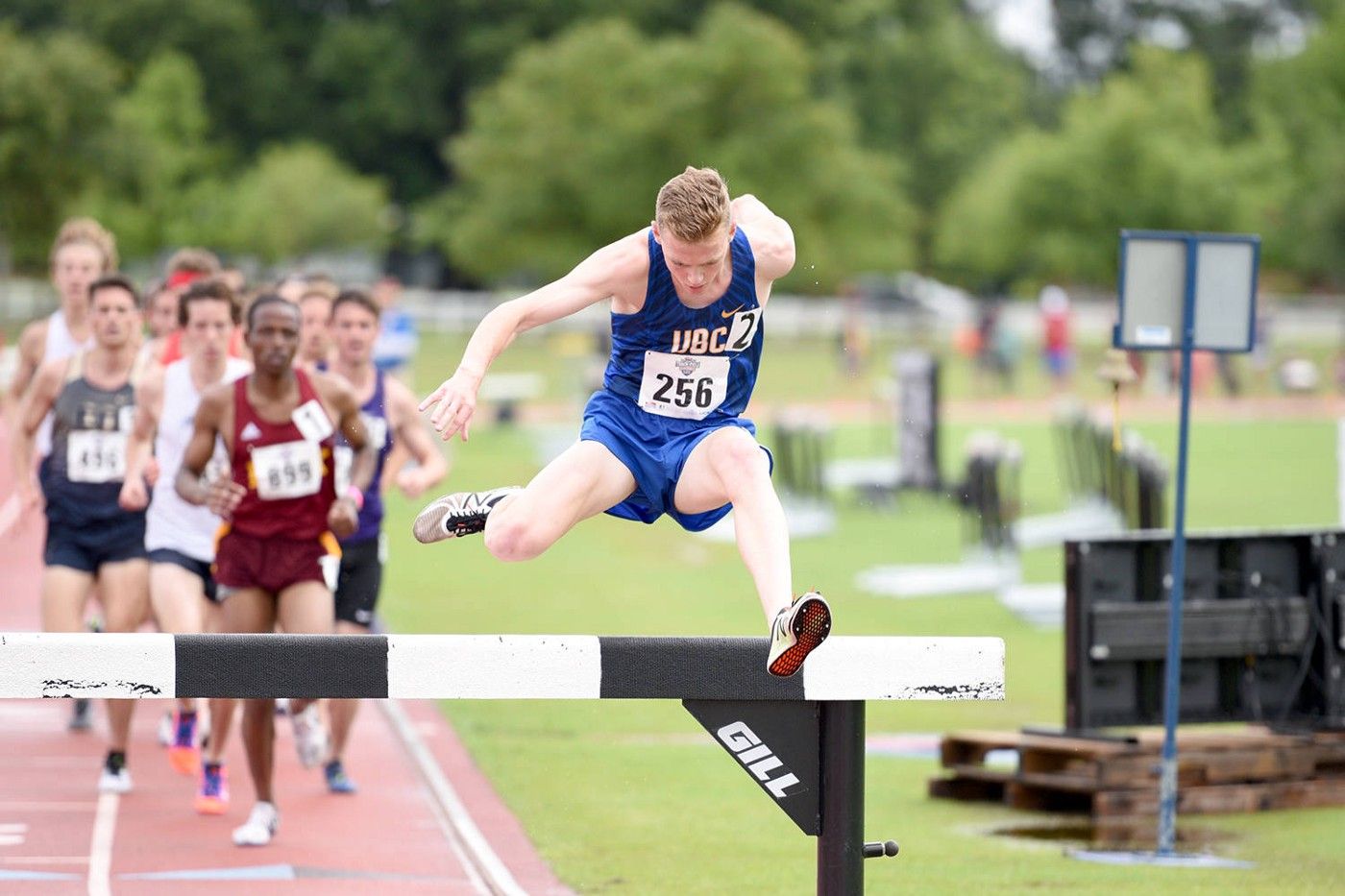
Q: Let’s talk about events. Now you each specialize in a single event. Through high school and university, what other events, if any, did you compete in? Was this a factor in recruitment?
Lindsey: I always loved running. I ran cross-country and track in elementary school and for some reason I just always ran the 800 and I still run the 800, so I never really changed events. I was always a middle distance runner and that’s what I always enjoyed. I was never a strong field person, I cannot jump.
John: Distance running seems to be the last resort to so many people when you realize you can’t jump that high or run very fast but you can grind it out for hours. That was my story. [Distance running] has a certain type and I feel like track and field generally attracts a certain type and that is someone who is very individually motivated, something I think is very exciting about the university level of sport especially in our country. In track and field there are very few opportunities to represent a team and that changes a lot when you go to university. Track and field starts becoming a team event, where you can compete in team meets where there is scoring and that is something that I found very exciting and unique. I would be called upon to run multiple events, which were not necessarily just the steeplechase. So during my time in university I would run either the 1500 or the 5000m as well as the steeplechase in our conference meet and our national championships, to try and get as many points for the school as possible and I think that was something that was very unique. As much as I felt supported to pursue my individual event (the steeplechase), university allowed me the opportunity to run for something larger than just my individual event. But I think another thing to be wary of when you’re looking at schools is to see where you fit on a roster. Is there going to be an opportunity to contribute to the team and feel like you’re adding value to the conference meet or the championship meet?
Django: I did attempt the 800 metre once. I made it up to 600 metres, then I walked off the track crying. Then senior year of high school I did the 4x100 metre relay and then for me it was just serious business. Doing strictly high jump was just a big thing for me. If you go to the NCAA and you have some talent, the school will push you to get points at their conference championships. They can try to push you to do multiple events and for me I wasn’t having any of that. When I went on my visit and I sat down with the coach, I said, “Hey, if I am coming here then I am just doing high jump. I am not doing long jump, triple jump. I like my knees, I want a long career,” and I was very grateful they agreed.
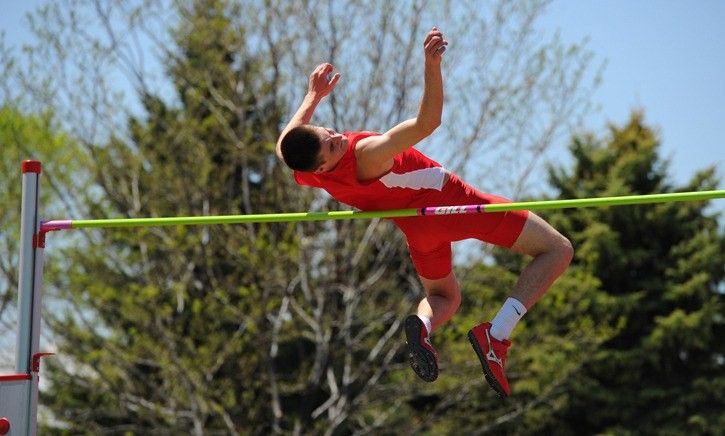
Q: We know the recruitment process can be overwhelming. If you have one piece of advice to give your high school self what would it be?
Lindsey: I think specifically in the recruitment process it would be to spend time with the team and the coach that you’re going to visit and to make sure that the program and the atmosphere and where you could be living and spending the next five years of your life is somewhere you can actually see yourself being. That was the most important thing for me because as soon as I met the coach I could see myself being there and you do spend a lot of time with your teammates and you’re probably going to end up living with them at some point. You see them every day at practice, you could be in classes with them and you will travel with them, so it is really important to be able to see yourself getting along with your teammates. They become your best friends. As well, just think about three things you want in a school and focus on those. There are so many aspects and factors that can affect your decision and you will probably go nuts thinking about all of them and all of the options.
Django: If I could go back and kick myself in the pants, I would tell myself to buckle down, take more initiative, and not be so passive in the process — especially academically. It closed a lot of doors for me but in the grand scheme of things going to school post-secondary was not something that I ever imagined doing. I had to stay a week after graduation from high school just to do some extra credit work so I could be eligible. Also to really lean on the people around you. Use your resources.
John: There are two things. One, make sure you’re going to the school for reasons that are important for you not because it’s the school your parents want you to go to, not because it’s a school that your high school coach went to, and not because they have the flashiest new facility or that they have produced one fantastic athlete. While all these components are great, your decision has to be something that you are doing for yourself because you are going to be the person that is going to be at the school for the next four to five, even six years.
Associations: NAIA, USPORTS or NCAA?
As you may know there are multiple associations that make up the collegiate track and field landscape:
- National Collegiate Athletics Association (more commonly known as the NCAA) is the largest collegiate athletics association. There are three divisions — I, II, and III. Larger schools generally compete in Division I and smaller schools in Division II and III. Simon Fraser University in Burnaby, Canada, is home to Canada’s only NCAA school and is in Division II.
- The NAIA (National Association of Intercollegiate Athletics) is an athletics association for small colleges and universities in North America. The University of British Columbia, in Vancouver, Canada, is a member of the NAIA for outdoor track and field. The rest of the NAIA’s track and field/XC institutions are in the United States.
- U SPORTS is the national governing body of university sport in Canada. There is a cross-country season and an indoor track and field season within this association. Interested in U SPORTS? Read about why you should consider a U SPORTS school.

Our panelists have all had their own unique experiences competing in these different associations. John competed in the NAIA as a member of the team at the University of British Columbia.
Q: UBC is unique in the sense that your cross-country season happens in U SPORTS, whereas your indoor and outdoor track and field seasons happen in the NAIA. Can you tell us about the advantages of this for you and the team?
John: With regards to ending up in an NAIA institution, I kind of went in with my eyes closed and as I mentioned earlier I was very naive to the whole collegiate athletics system generally speaking, so I didn’t really understand the distinction between the NCAA , U SPORTS, or the NAIA. But what drew me to the NAIA was that fact that as a steeplechaser I was able to compete in my main event at the university level, and if I wanted to stay in Canada was going to mean going to UBC or SFU, where Lindsey went. So that was a big consideration for me and that is the story for a lot of athletes that go to Canadian schools, competing in American leagues. If you are a Javelin thrower, if you are a race walker, if you are a steeplechaser, like I am , those opportunities to compete at the university level don’t exist anywhere else in the country because those events don’t exist indoors. That was a big part of it for me.
The other consideration was distance from home. I’m from Kelowna, in the Okanagan and UBC was a good distance where I was far enough away that I felt like I was getting a university experience, where I was living on my own, establishing my own relationships and networks, apart from those I had grown up in. But it was close enough that I was never over a four hour drive from home, maybe five, if it was snowing on the top of the Coquihalla. There was that proximity where I felt like home was never a world away but that I was also establishing my own sense of space and my own identity separate from my parents and family in a new city.
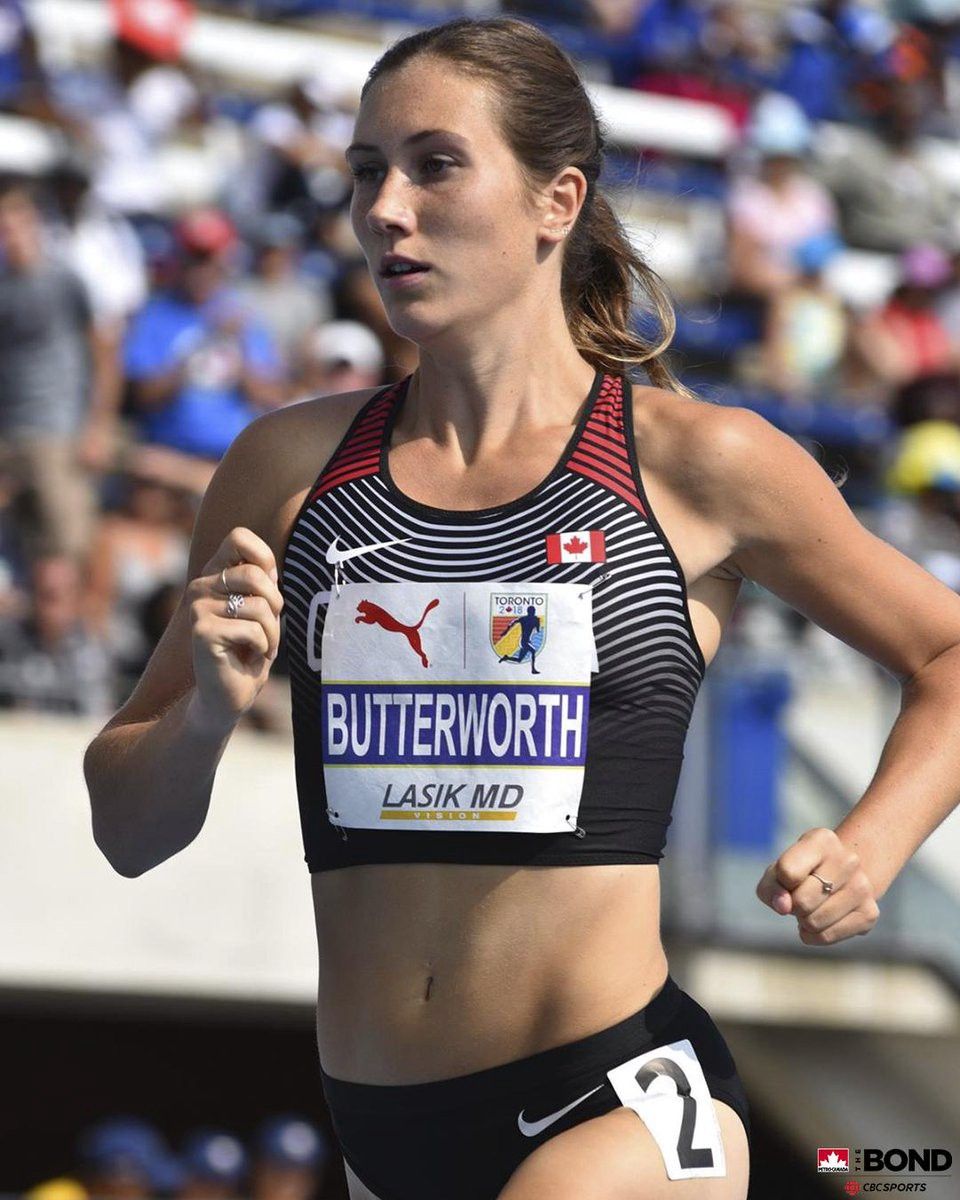
Lindsey competed at Simon Fraser University. Part of what made her experience so unique was that she was a member of the team during its transition from the NAIA to the NCAA.
Q: SFU is very unique when it comes to its athletic/academic offering. It’s a high ranking academic institution and the only Canadian school in the NCAA. Can you tell us about your experience transferring from the NAIA to the NCAA? What did it mean for the program to be the only Canadian school in the NCAA?
Lindsey: That was one of the biggest reasons why I chose SFU, because it was in Canada and my club coaches had kind of scared me a little bit about going to the States, saying that if I got injured, since some universities aren’t supportive, I might [get] dropped — that was the rumour going around.
But going into the NCAA and the women’s middle distance program were the two biggest reasons I chose to go to SFU. Also I did get a bit of a unique experience because we were just transitioning from the NAIA in my first year, to the NCAA. So I did get to compete in the NAIA in my first year which was a lot of fun. A lot of people on the team made it to nationals and it replicated the conference championships at the NCAA level. It was a lot of fun to have around 30 teammates at the national championships and that was a great atmosphere. But we had to sit out in my second year, as we were transitioning, but then in my third year we got to compete in Division II , which was another step up in championship level and level of competition and depth. However, not as many teammates qualified for the national championships and it was a huge accomplishment to get there.
The other thing that I really liked about the NCAA was that I did get the three seasons, so that was important to me getting able to compete in cross-country, indoors and outdoors. Then, because our coach focused on our long-term development we were encouraged to compete at Canadian Nationals. Every year in university, I pretty much competed in cross-country, indoor/outdoor, and then at Canadian Nationals. I really like competing and racing, so I never felt like I was burning out and I was still able to make national teams while at university, but I understand that doesn’t work for everyone.
And for Django, he made his way all the way down to New Mexico, an institution in the NCAA Division I.
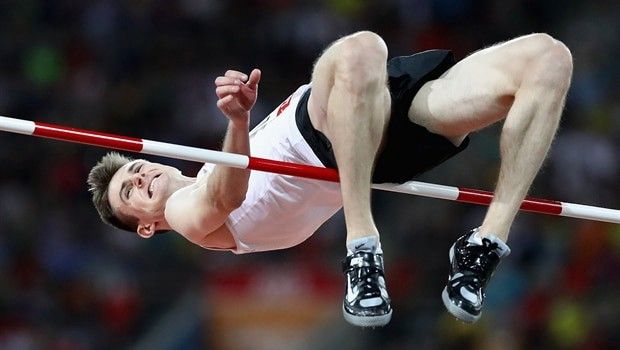
Q: What was it like living in Albuquerque, New Mexico? As a high schooler, how did you feel about making the commitment to somewhere so far away?
Django: Coming from a temperate rainforest with green grass, tall green trees and sea level ocean front, I really felt I had landed on Mars. There was an adjustment to get used to the desert landscape, the dry heat and altitude. Not to mention, it felt as far away as mars. However, I think that was exactly what I needed at the time. Moving far away was one of the best things I have ever done. I grew an independence and learned to be self-sufficient while taking on the idea of making a new life for myself and taking on new challenges. It was difficult of course, but all the more exciting and rewarding.
Q: It’s a challenge for a grade 11 or grade 12 student to understand how big the leap can be from high school to university — both in terms of academics and athletics. As an NCAA Division I student-athlete, how would you describe the academic and athletic adjustments? What was freshman competition like in NCAA DI?
Django: Coming out of high school I was already kind of competing at that university level. Athletically, I didn’t really feel that pressure. Naturally I wanted to jump better, I wanted to compete to my best, so naturally that fell into place. Academically, I think the only difference was that I started showing up more. I started going to class, I sat in the front, because if you are not keeping your grades up, you’re not eligible for athletics. I smartened up a little bit, I buckled down, I stayed more on top classwork and homework. Even while I was going to conference championships, I was also bringing my homework with me and a couple hours before a competition I was doing homework, writing papers. It is definitely a balance but if you love what you do, you have to do the work as well, so it all kind of came together.
Start creating your own experience
As you can see, each individual recruitment experience can be very different. You don’t have to have everything figured out right away! But it is the unique process that acts as the baseline for an even more unique university experience. It is important to just open yourself up to the world of collegiate athletics to see what is out there for you. Focus on what is important to you, whether that is a specific academic program, being part of a small school community or living close to home. Narrow down your search, talk to coaches, talk to past and present athletes and start making connections. Streamline Athletes is here to help you embark on your own journey. Explore programs, talk to coaches, and start your search today.
Information Session
Processing your application
There was an error sending the email, please try again

